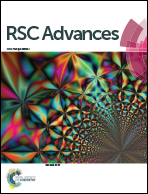Tuning the electronic and magnetic properties of MoS2 nanotubes with vacancy defects
Abstract
By using density functional theory calculations, we evaluated the effects of vacancy defects on the electronic and magnetic properties of MoS2 nanotubes. While both zigzag and armchair MoS2 tubes are intrinsically semiconducting, armchair (6, 6) tubes with simple disulfur and mono-molybdenum vacancies, as well as a large vacancy cluster consisting of both Mo and S vacancies (VMoS3), and zigzag (10, 0) tubes with a mono-molybdenum defect are metallic. In particular, the (6, 6) tube with disulfur and VMoS3 defects is half-metallic, which is promising for applications in spintronic devices. In addition, the (6, 6) tube exhibits an easily tunable magnetic property by introducing vacancies. We found that disulfur, mono-molybdenum, VMoS3, and VMoS6 vacancies are able to cause spin polarization to induce net magnetic moment. This is mainly because the spin states prefer to couple through Mo atoms that are arranged along the zigzag direction (the axial direction of the armchair tube). In contrast, the zigzag (10, 0) tube is relatively hard to tune and is always nonmagnetic, except for the case of VMoS3. More importantly, atomic- and orbital-projected electron density of states analyses reveal that the net spins are mainly contributed by bare Mo atoms at or near the vacancy edge. For defect-laden MoS2 tubes that are still semiconducting, the energy gap and effective masses of the charge carriers are highly dependent on tube chirality and defect species. Our present findings highlight the worthwhile semiconducting, metallic, and half-metallic properties of MoS2 tubes, particularly armchair species, which can be obtained via defect engineering; this can find broad applications for the fabrication of nanoelectronic and spintronic devices.



 Please wait while we load your content...
Please wait while we load your content...